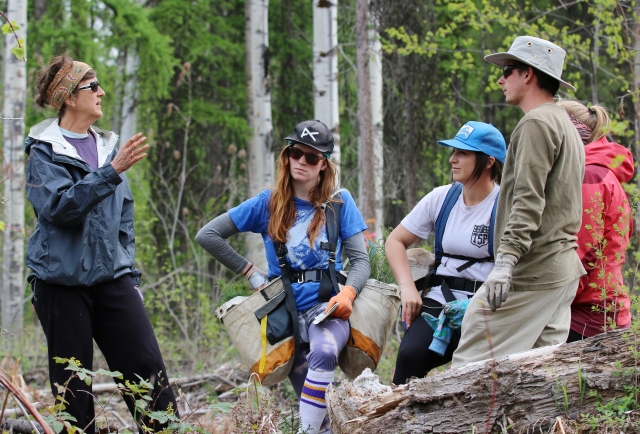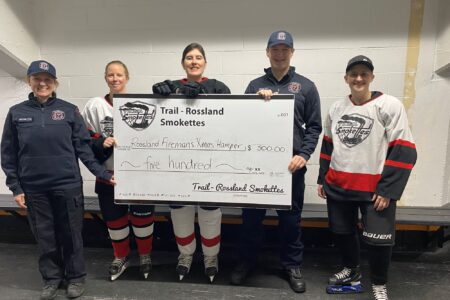Selkirk College Forest Technology Students Shift to Mountain Classroom
Trading textbooks for tools of the trade, first year Selkirk College Forest Technology Program students wrapped up their semester in the bush.
Though outdoor work in the natural surroundings of the West Kootenay is a fixture of the nationally accredited two-year program, the semester ending ten-day field study session is an important send-off for the students who will be retuning for their second year in September. Over a two-week period, 26 students took part in a number of hands-on training exercises that complimented recently completed classroom study.
“This is an important part of the program,” said Forest Technology Program Instructor Carol Andrews. “It’s a nice introduction for those students who don’t have a lot of experience in the field.”
Set up in locations throughout the West Kootenay, students dove into silviculture surveys, fire suppression, chainsaw training, development planning and tree planting.
Getting a Taste for Forest Regeneration
For the tree planting element of the field study, students spent two days above Trail on the Bear Creek Forest Service Road. In partnership with Atco Wood Products, students took over a block that saw 10,400 trees planted in the outdoor classroom.
“This is the first time I’ve tree planted,” said Dylan Tripp, who moved to Nelson three years ago from Winnipeg to get a taste of the Kootenay ski culture. “It’s great to learn all aspects of forestry. I entered the program to find stable work in the Kootenays and being outside for a living sounded perfect.”
From straight out of high school to mature students who have already logged plenty of time in the workforce, students arrive to the program from a variety of different backgrounds. Though tree planting is only one small part of the scope of the program, students embraced the opportunity to gain more knowledge.
“I love the silviculture aspect of forestry,” said 26-year-old Colby Bedford, who spent five years tree planting before entering the Selkirk College program. “It’s been a hard adjustment to return to the classroom, but it’s been totally worth it. I’m surrounded by a lot of environment nerds just like me and this gives me new energy to pursue a career in forestry.”
Instructors Share Well-Earned Knowledge
While students trudged through the forest to experience the labour-intensive undertaking, Andrews and fellow instructors Peter Schroder and Jesper Nielsen had the opportunity to bring theory to life. Providing an education that will allow students to transition into supervisory roles in forestry and other environmental careers, the instructors took full advantage of the surroundings.
“There is a real wide range of educational background and experience with our students,” said Andrews. “It works well because the older students mentor the younger students in attitude, ethics and practical knowledge.”
Andrews is a forest industry veteran who spent more than 20 years working with large forest companies, the provincial government and her own contracting company. Raised in the West Kootenay, Andrews spent her first year of post-secondary at Selkirk College before transferring to the University of British Columbia where she earned her Bachelor of Science in Forestry. She has been an instructor in the Selkirk College Forest Technology Program for the last 10 years.
“We [Selkirk instructors] don’t come from the purely academic world, we have lived in the hands-on work world,” she said.
With the field study portion of the first year now complete, students have scattered in all different directions to take up forestry-related jobs for the summer. When they return for the second year in September, students can look forward to a pair of semesters that are more focused on field work.
The Forest Technology Program partners with local industry to provide opportunities for field work. For the tree planting portion of training, Selkirk College alumnus and Atco Wood Products silviculture supervisor Mark Macaulay was instrumental in getting the students in the field.
























